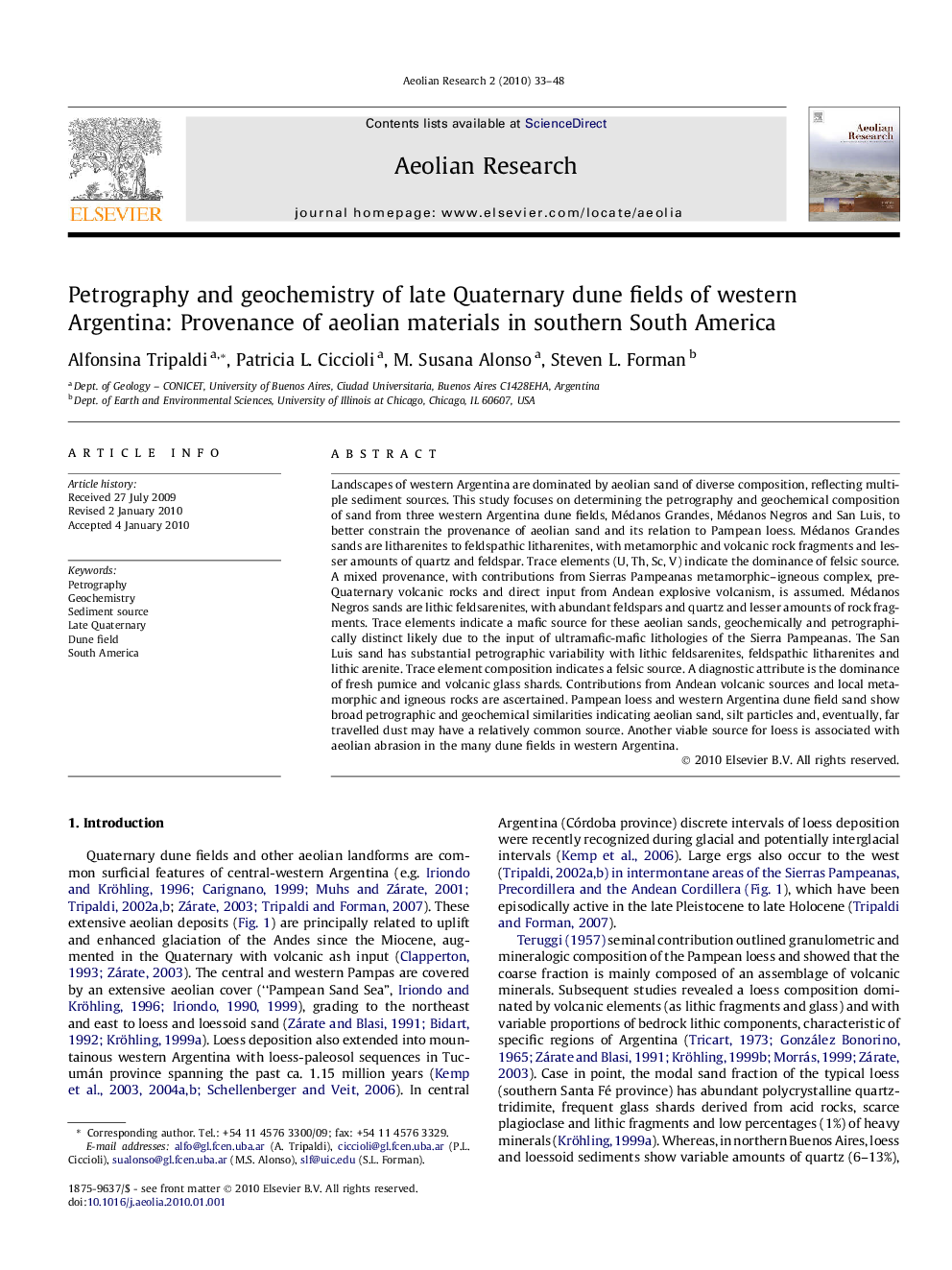| کد مقاله | کد نشریه | سال انتشار | مقاله انگلیسی | نسخه تمام متن |
|---|---|---|---|---|
| 4673982 | 1346976 | 2010 | 16 صفحه PDF | دانلود رایگان |

Landscapes of western Argentina are dominated by aeolian sand of diverse composition, reflecting multiple sediment sources. This study focuses on determining the petrography and geochemical composition of sand from three western Argentina dune fields, Médanos Grandes, Médanos Negros and San Luis, to better constrain the provenance of aeolian sand and its relation to Pampean loess. Médanos Grandes sands are litharenites to feldspathic litharenites, with metamorphic and volcanic rock fragments and lesser amounts of quartz and feldspar. Trace elements (U, Th, Sc, V) indicate the dominance of felsic source. A mixed provenance, with contributions from Sierras Pampeanas metamorphic–igneous complex, pre-Quaternary volcanic rocks and direct input from Andean explosive volcanism, is assumed. Médanos Negros sands are lithic feldsarenites, with abundant feldspars and quartz and lesser amounts of rock fragments. Trace elements indicate a mafic source for these aeolian sands, geochemically and petrographically distinct likely due to the input of ultramafic-mafic lithologies of the Sierra Pampeanas. The San Luis sand has substantial petrographic variability with lithic feldsarenites, feldspathic litharenites and lithic arenite. Trace element composition indicates a felsic source. A diagnostic attribute is the dominance of fresh pumice and volcanic glass shards. Contributions from Andean volcanic sources and local metamorphic and igneous rocks are ascertained. Pampean loess and western Argentina dune field sand show broad petrographic and geochemical similarities indicating aeolian sand, silt particles and, eventually, far travelled dust may have a relatively common source. Another viable source for loess is associated with aeolian abrasion in the many dune fields in western Argentina.
Journal: Aeolian Research - Volume 2, Issue 1, June 2010, Pages 33–48